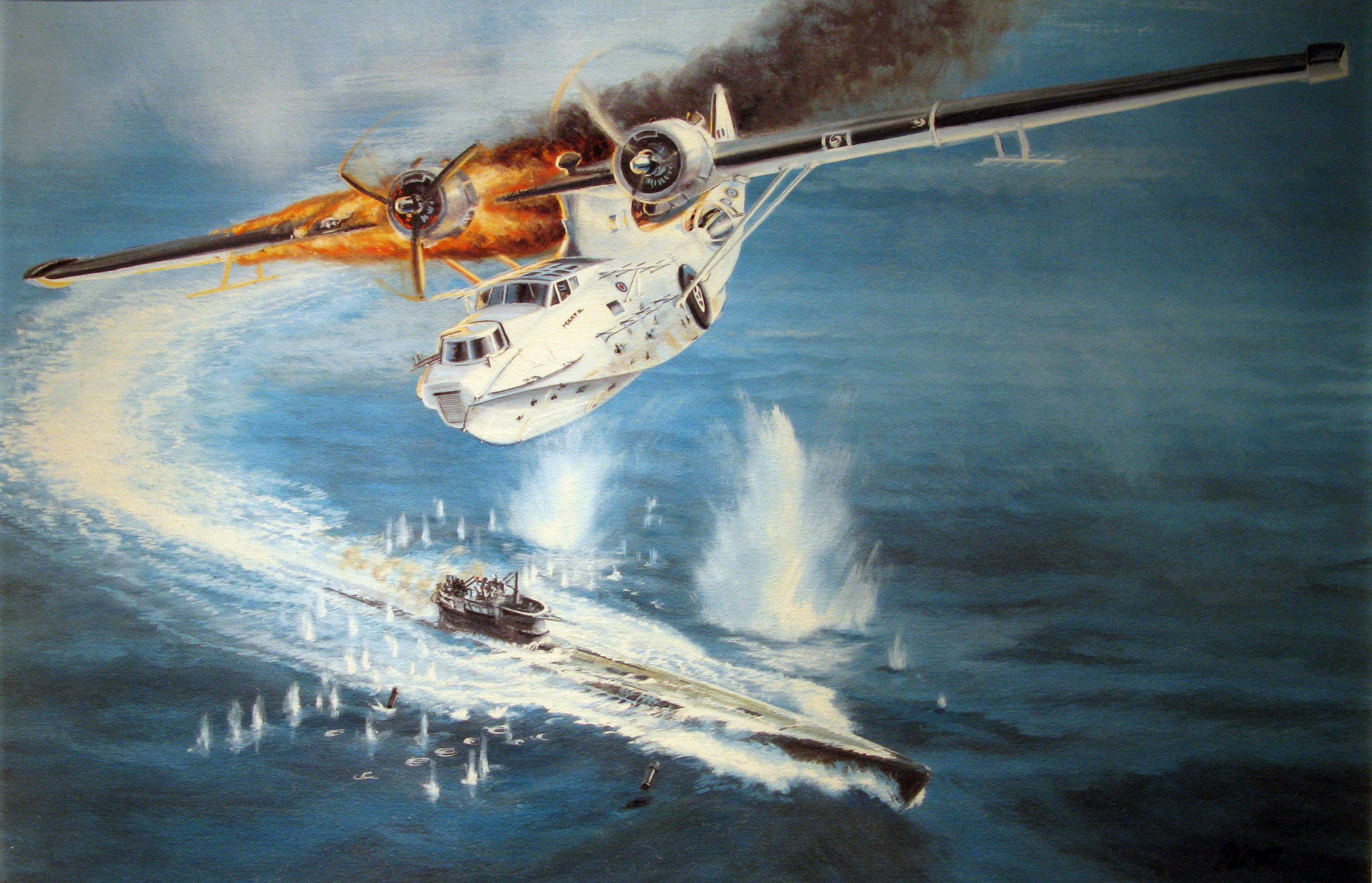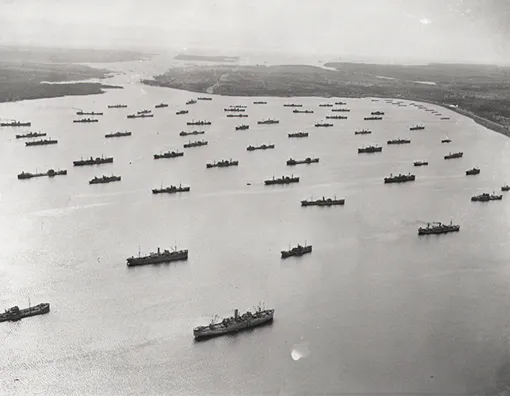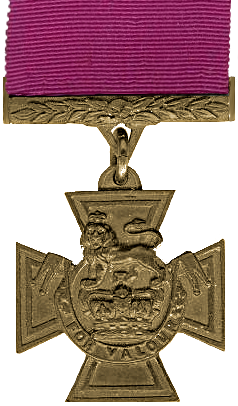Overview - Battle of the Atlantic

The battle of the Atlantic was a naval-naval and air-naval battle. It was Germany's goal to blockade Britain, which was receiving massive supplies of food fuel and weapons from Canada and the USA. The U-boats were attacking Merchant Navy Convoys and they were being defended by escort Naval ships (Destroyers and Corvettes) as well as air support from flying boats such as Canso/Catalinas. Later in the war B24 Liberators were used as long range patrol bombers.

As a small island country, the United Kingdom was highly dependent on imported goods. Britain required more than a million tons of imported material per week in order to survive and fight. In essence, the Battle of the Atlantic involved a tonnage war: the Allied struggle to supply Britain and the Axis attempt to stem the flow of merchant shipping that enabled Britain to keep fighting.
Various petroleum products, primarily gasoline were required for the war effort. Britain produced ZERO fuel. 6 billion barrels of petroleum product were shipped from the USA via convoys. (159 litres in a barrel)
From 1942 onward the Axis also sought to prevent the build-up of Allied supplies and equipment in the British Isles in preparation for the invasion of occupied Europe. The defeat of the U-boat threat was a prerequisite for pushing back the Axis in Western Europe. The outcome of the battle was a strategic victory for the Allies"”the German blockade failed"”but at great cost: 3,500 merchant ships and 175 warships were sunk in the Atlantic for the loss of 783 U-boats (the majority of them Type VII submarines) and 47 German surface warships, including 4 battleships (Bismarck, Scharnhorst, Gneisenau, and Tirpitz), 9 cruisers, 7 raiders, and 27 destroyers. Of the U-boats, 519 were sunk by British, Canadian, or other allied forces, while 175 were destroyed by American forces; 15 were destroyed by the Soviets and 73 were scuttled by their crews before the end of the war for various reasons. Wikipedia: Battle of the Atlantic
 Battle of the Atlantic (Canadian Encyclopedia)
Battle of the Atlantic (Canadian Encyclopedia)
 Battle of the Atlantic: Timeline Series
Battle of the Atlantic: Timeline Series
 Battle of the Atlantic Article
Battle of the Atlantic Article
Bletchley Park
Bletchley Park was an ultra secret operation whose purpose was to decode the messages created by the German Enigma machine. Some of the greatest minds in Britain were employed at Bletchley Park. The most famous was Alan Turing.
 Battle of the Atlantic (Bletchley Park)
Battle of the Atlantic (Bletchley Park)
 Codebreaking and the Battle of the Atlantic
Codebreaking and the Battle of the Atlantic
Movies
Although it is a fictional American film, it is an excellent portrayal of real events. It is the story of the mid-Atlantic gap (the Black Pit), where there was no air cover for the convoys. The convoys typically had air cover from Yarmouth Nova Scotia, ReykjavÃk Iceland and John-o-Groats in Scotland. But, there was still a gap. It also references "Dicky", a Royal Canadian Navy Flower-class corvette, HMCS Dodge, call sign "Dicky".
 The True Story Behind Greyhound (Smithsonian Magazine)
The True Story Behind Greyhound (Smithsonian Magazine)
 Uboat Losses 1942 (Year of Greyhound Movie)
Uboat Losses 1942 (Year of Greyhound Movie)
ðŸ indicates airmen of specific interest. They are not more important than other deaths, but do serve to illustrate an aspect of the conflict.
Air War Casualties: Battle of the Atlantic (178)
Questions for David Hornell VC
- The Battle of the Atlantic lasted from 1939 until 1945 and Canadians had a very important role in it. Why was the North Atlantic such an important area of the ocean for the Allies and especially Great Britain in World War II?
- U-boats
- What were U-boats?
- What critical role did U-boats have in the War?
- Why was it so important for the Allies to destroy as many U-boats as they could?
- In June, 1944, the month when David Hornell flew his critical mission how many U-boats were sunk in the Atlantic Ocean?
- What were the top three causes of these boats being sunk?
- Message Encryption
- What was the Enigma Machine?
- What was the main purpose of this machine?
- Why was it so important for the Allies to break the enigma code?
- David Hornell
- Where was David from in Canada?
- How old was he when he signed up in 1941 and how old was he when he died?
- What was his training to prepare him for World War II?
- On the night of June 24, 1944, what was the main mission of David Hornell and his fellow crew as they flew their Canso Aircraft?
- Explain in detail what happened in the attack.
- If you were the pilot of the plane, would you have done the same as David Hornell did? What would you have done that would be different from Hornell?
- Outline the series of events that took place after the Canso’s attack.
- Imagine you were one of the crew on the Canso aircraft that survived. Write a letter to a good friend dated August 24, 1944, to explain what you were thinking and how you felt once the whole ordeal was over.
- Compare to operations today
- If this mission had taken place today, what do you think would have been different in terms of the rescue?
- If the rescue had been launched today, do you think there would be more survivors from the Canso aircraft? Explain your reasoning.
- D. S. Scott was a member of the Canso aircraft crew.
- What happened to him after the attack?
- What do you think would have been going through his mind just before the end?
- In your opinion was David Hornell a hero? Explain your reasoning.
Questions for David Hornell VC
- The Battle of the Atlantic lasted from 1939 until 1945 and Canadians had a very important role in it. Why was the North Atlantic such an important area of the ocean for the Allies and especially Great Britain in World War II?
- U-boats
- What were U-boats?
- What critical role did U-boats have in the War?
- Why was it so important for the Allies to destroy as many U-boats as they could?
- In June, 1944, the month when David Hornell flew his critical mission how many U-boats were sunk in the Atlantic Ocean?
- What were the top three causes of these boats being sunk?
- Message Encryption
- What was the Enigma Machine?
- What was the main purpose of this machine?
- Why was it so important for the Allies to break the enigma code?
- David Hornell
- Where was David from in Canada?
- How old was he when he signed up in 1941 and how old was he when he died?
- What was his training to prepare him for World War II?
- On the night of June 24, 1944, what was the main mission of David Hornell and his fellow crew as they flew their Canso Aircraft?
- Explain in detail what happened in the attack.
- If you were the pilot of the plane, would you have done the same as David Hornell did? What would you have done that would be different from Hornell?
- Outline the series of events that took place after the Canso’s attack.
- Imagine you were one of the crew on the Canso aircraft that survived. Write a letter to a good friend dated August 24, 1944, to explain what you were thinking and how you felt once the whole ordeal was over.
- Compare to operations today
- If this mission had taken place today, what do you think would have been different in terms of the rescue?
- If the rescue had been launched today, do you think there would be more survivors from the Canso aircraft? Explain your reasoning.
- D. S. Scott was a member of the Canso aircraft crew.
- What happened to him after the attack?
- What do you think would have been going through his mind just before the end?
- In your opinion was David Hornell a hero? Explain your reasoning.


 Greyhound Trailer (Youtube)
Greyhound Trailer (Youtube) 🍁John William Borum
🍁John William Borum
 🍁David Ernest Hornell
🍁David Ernest Hornell William Hume Mather
William Hume Mather W L Junge
W L Junge